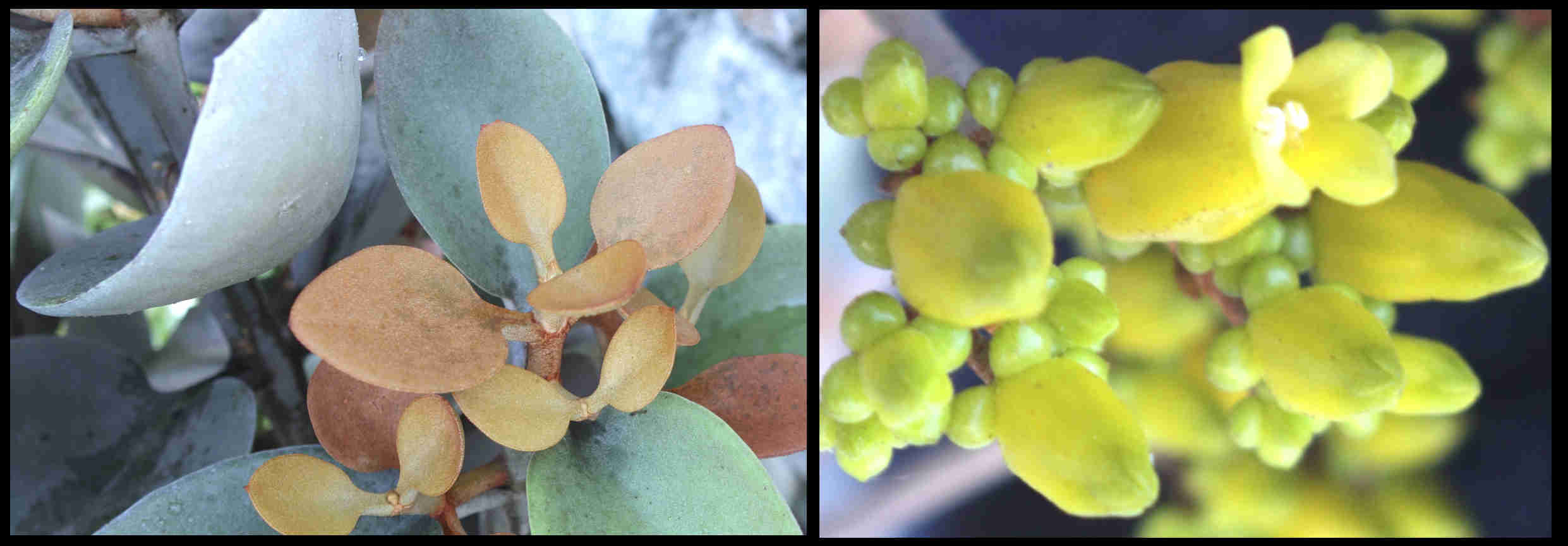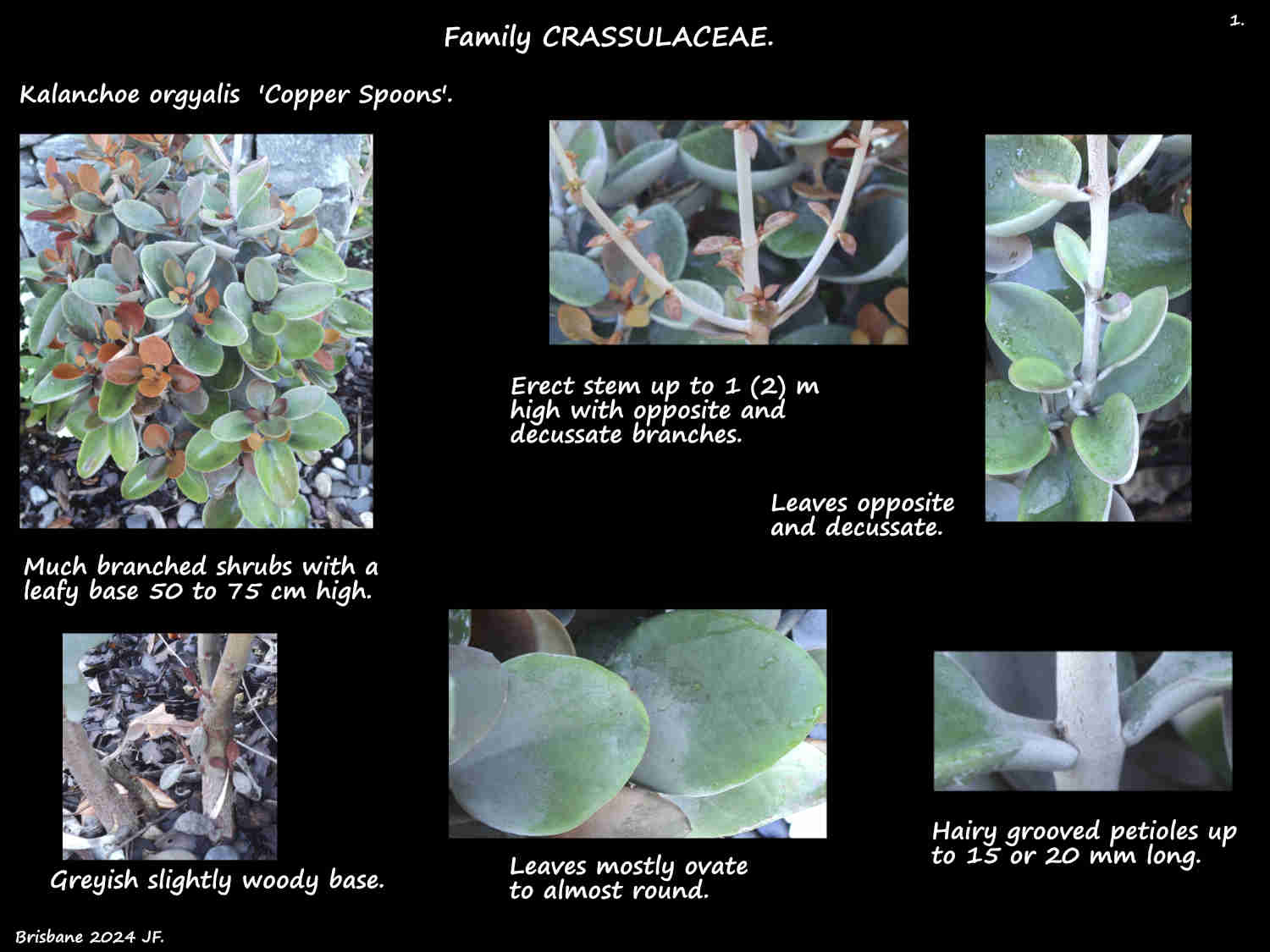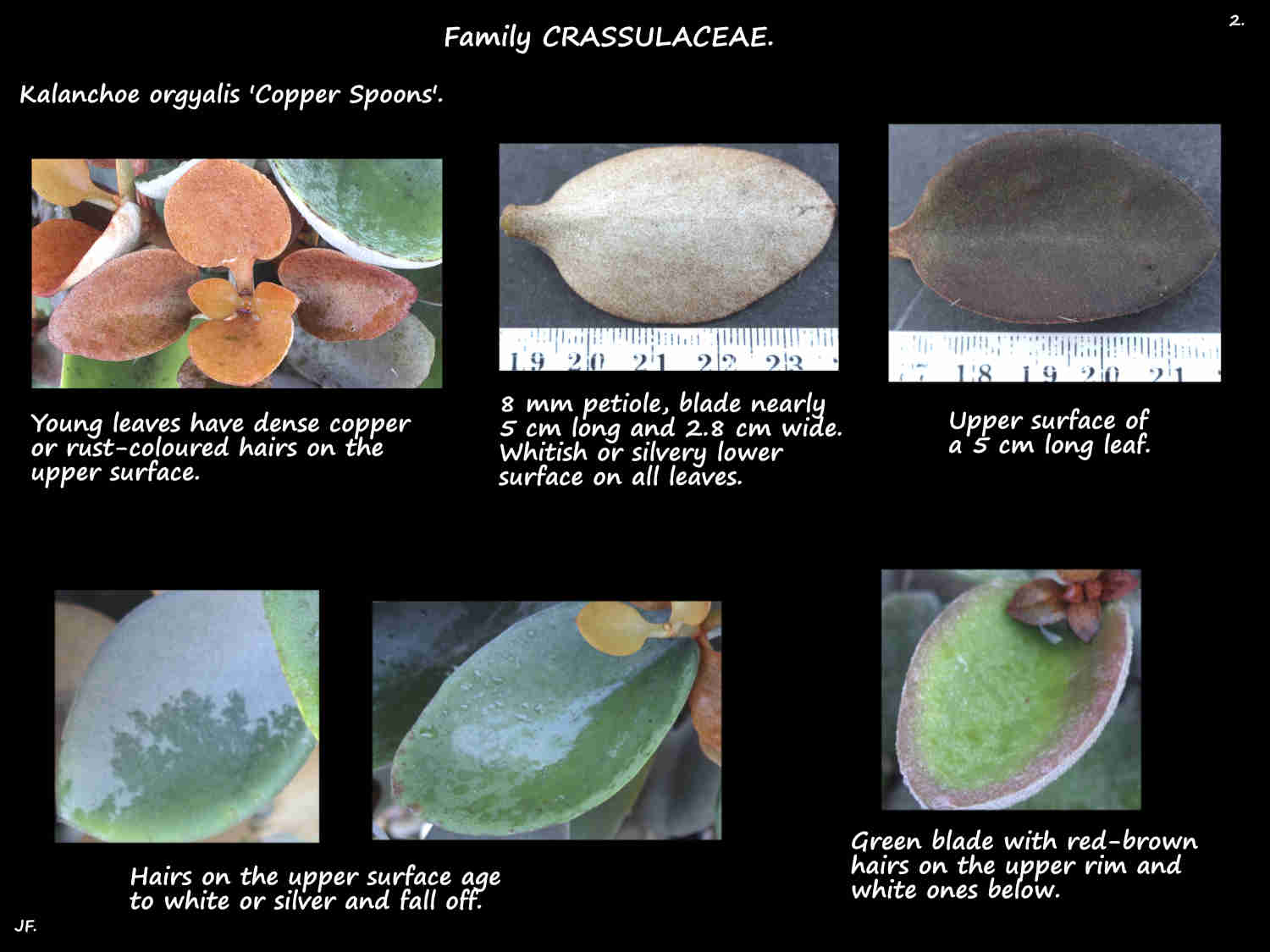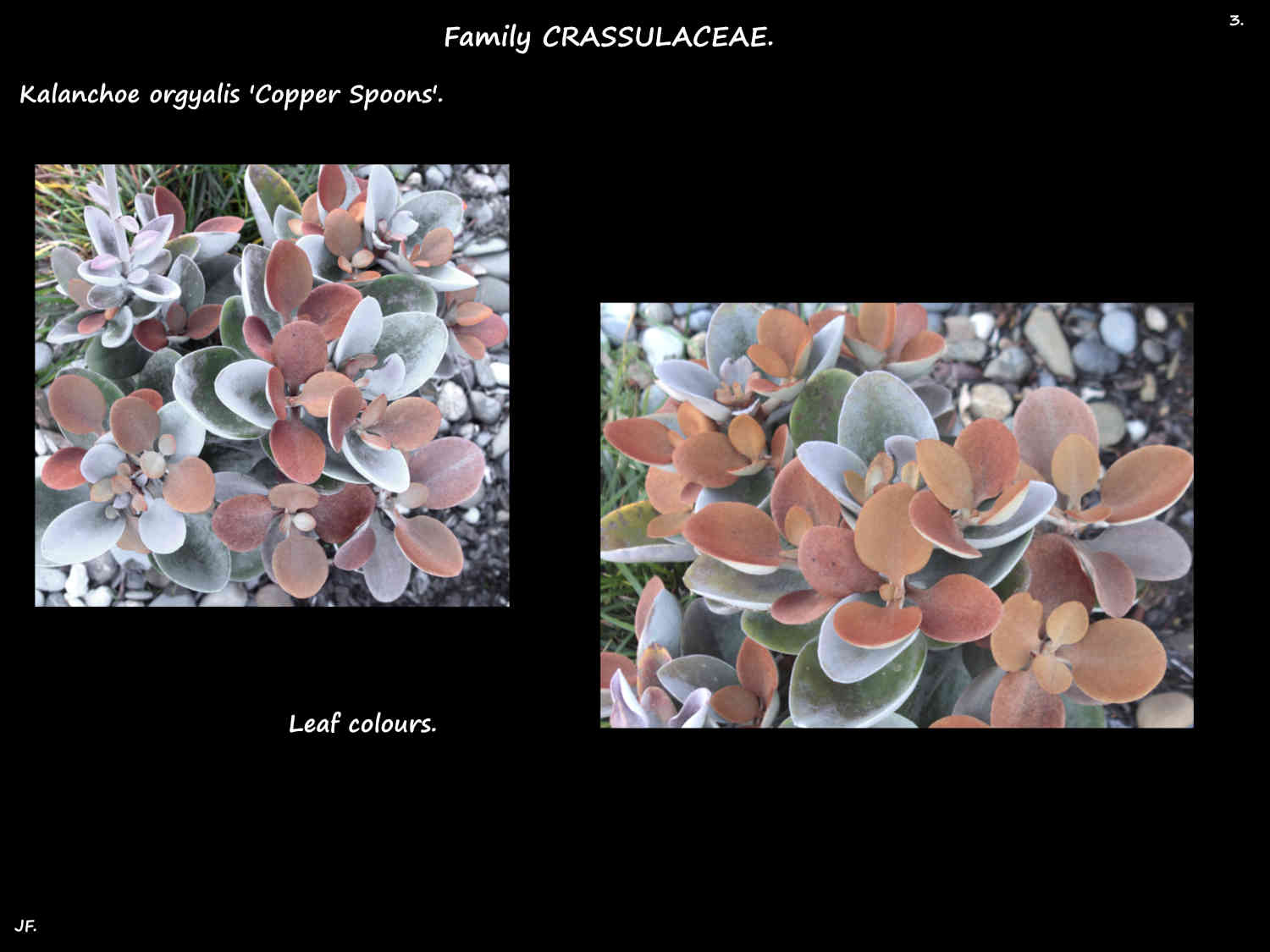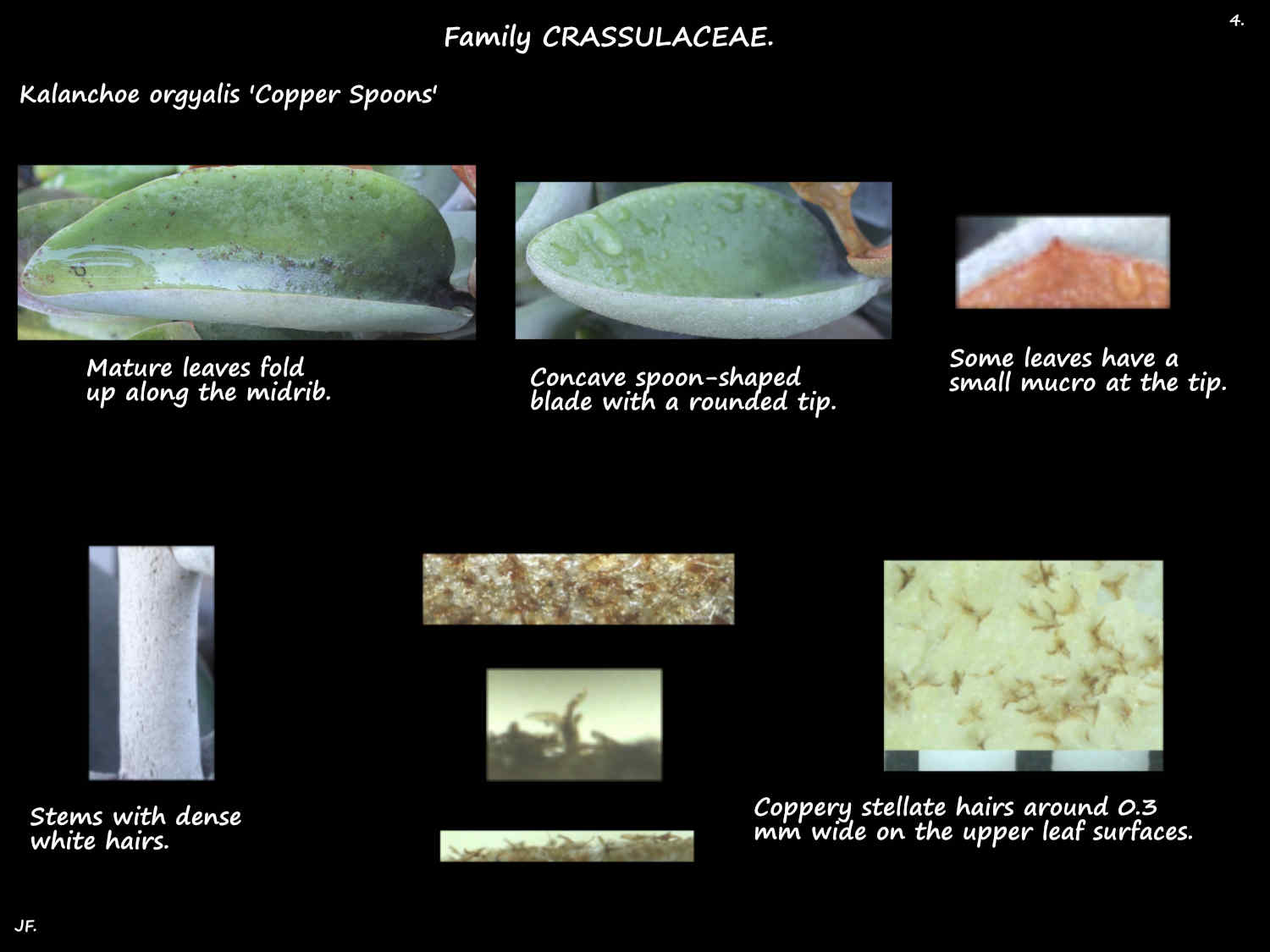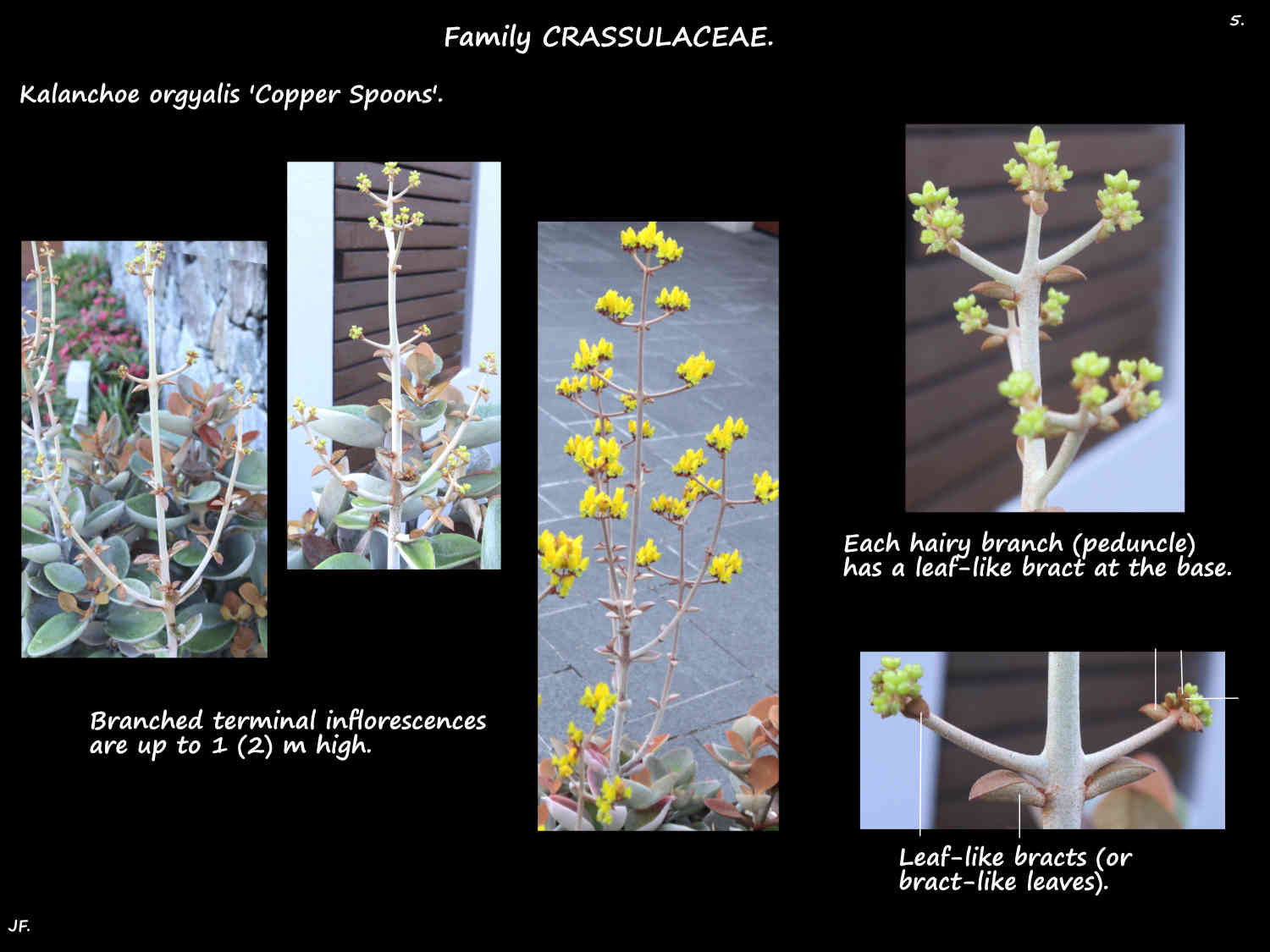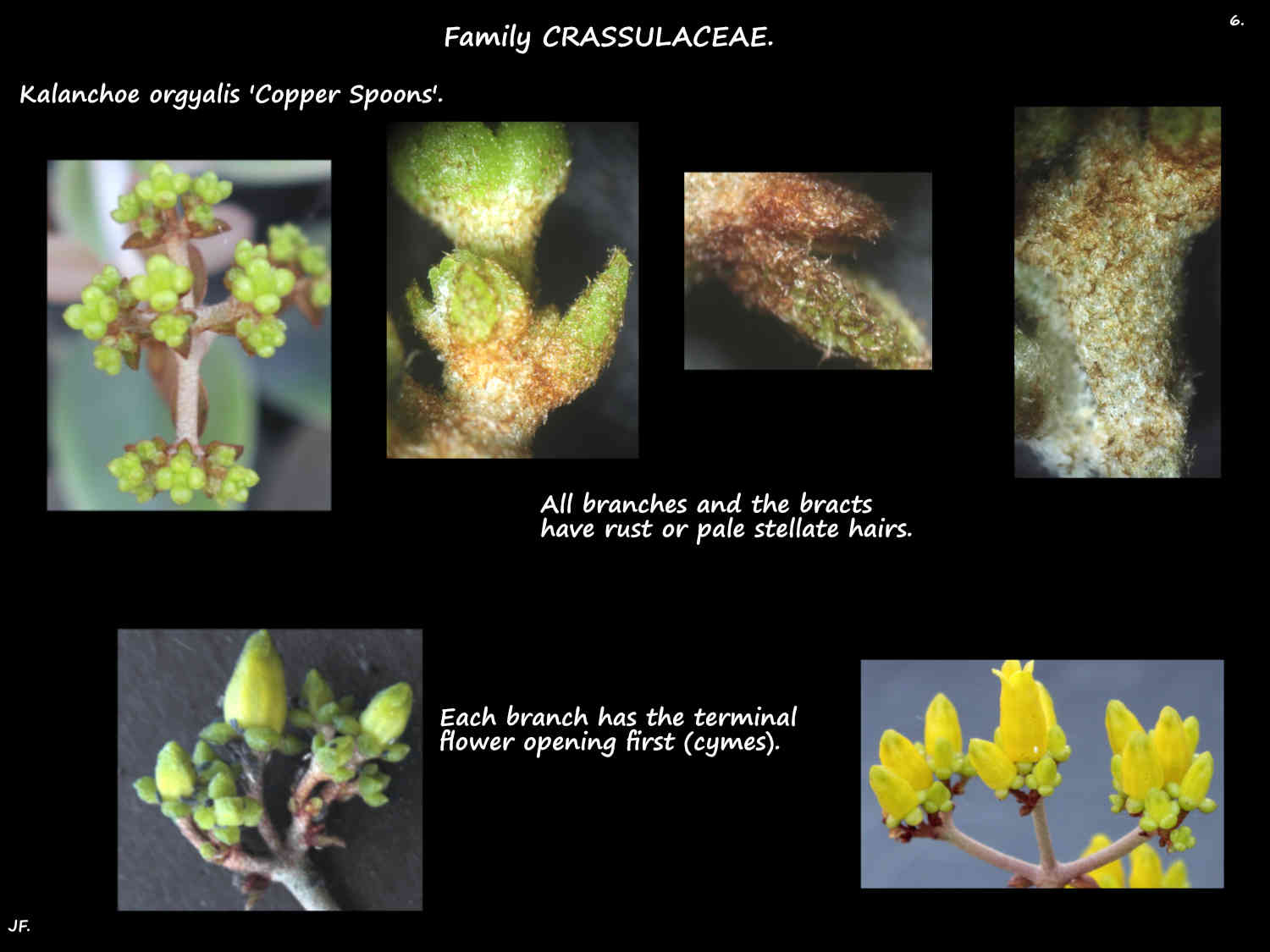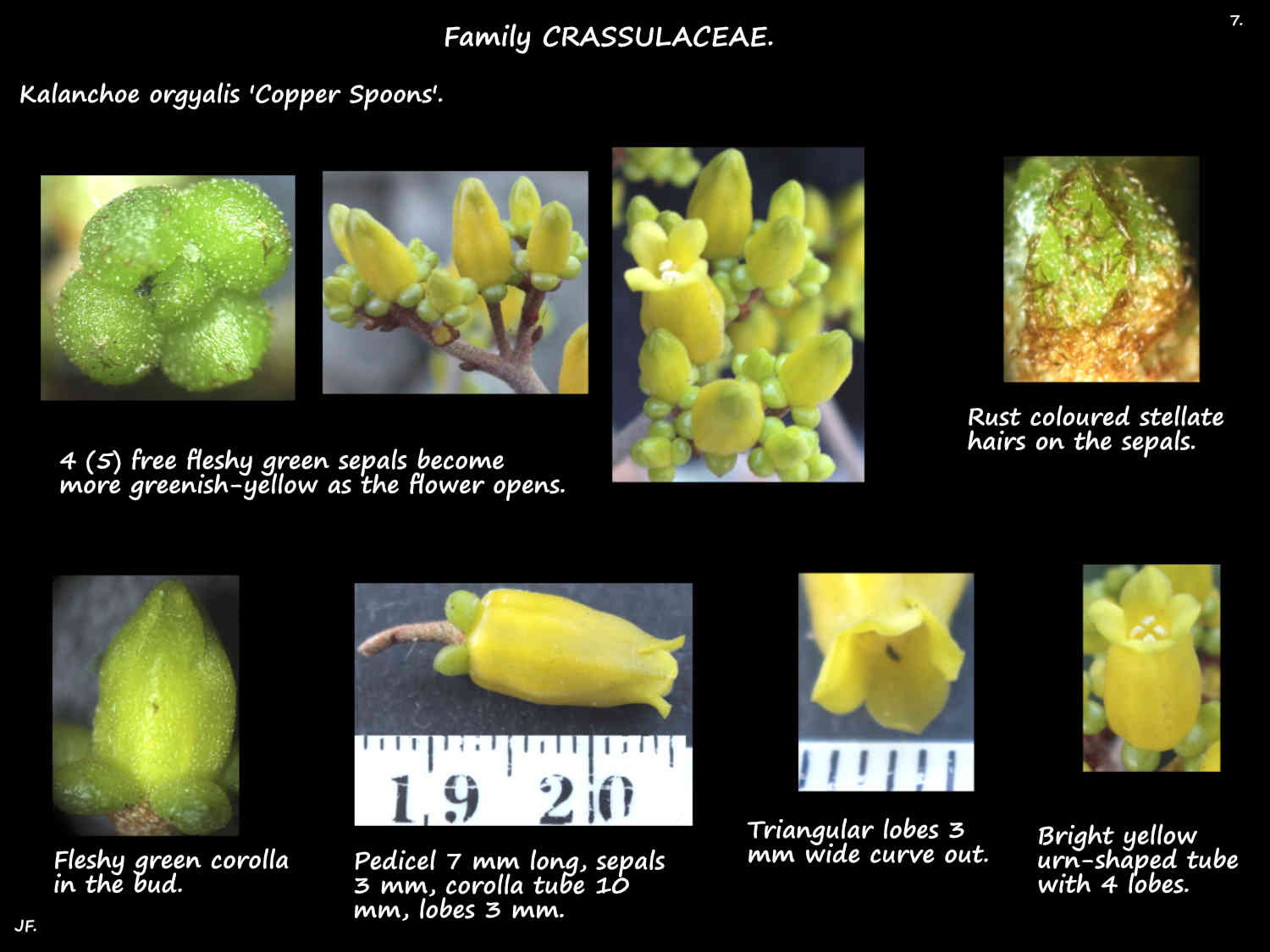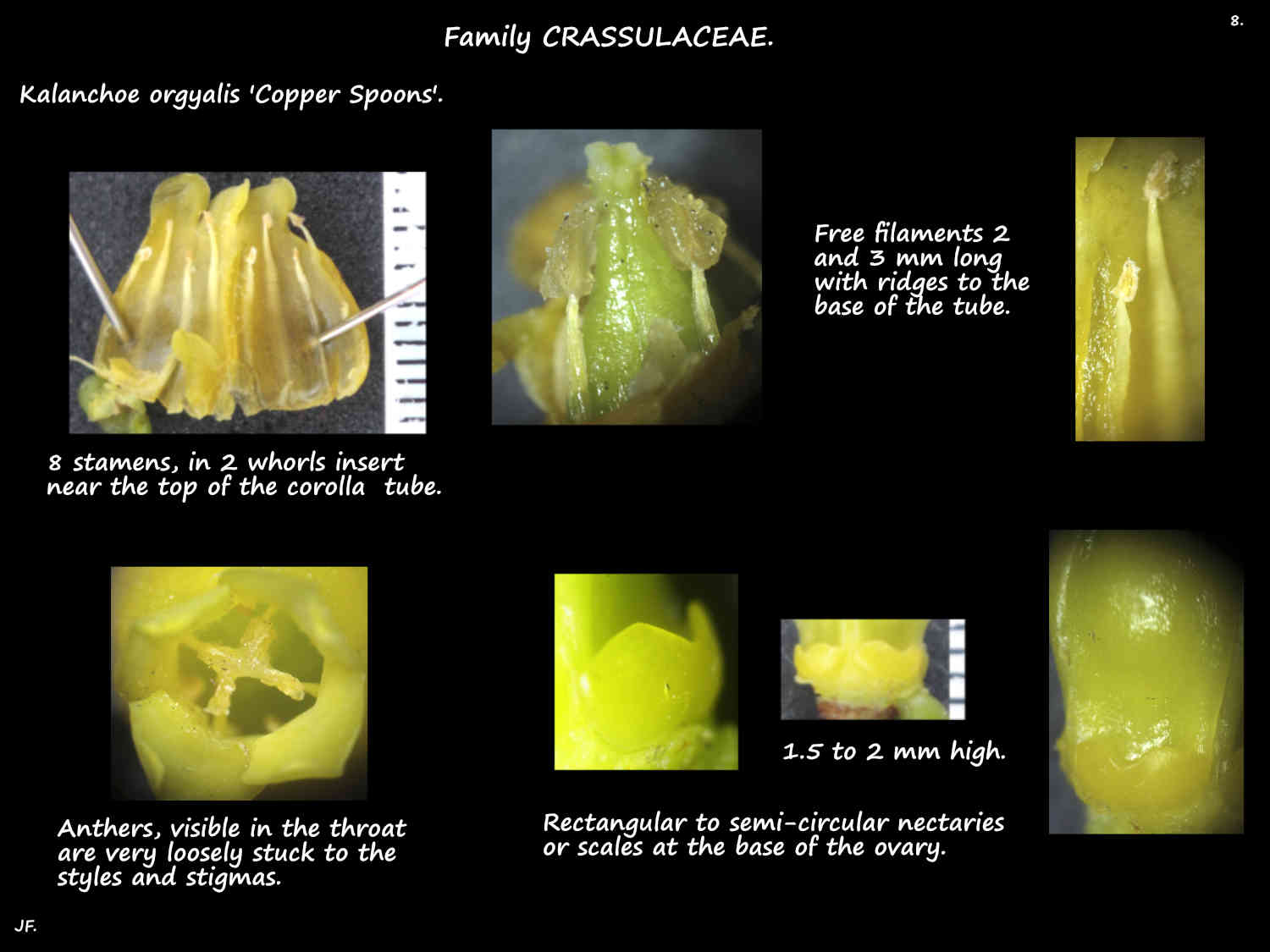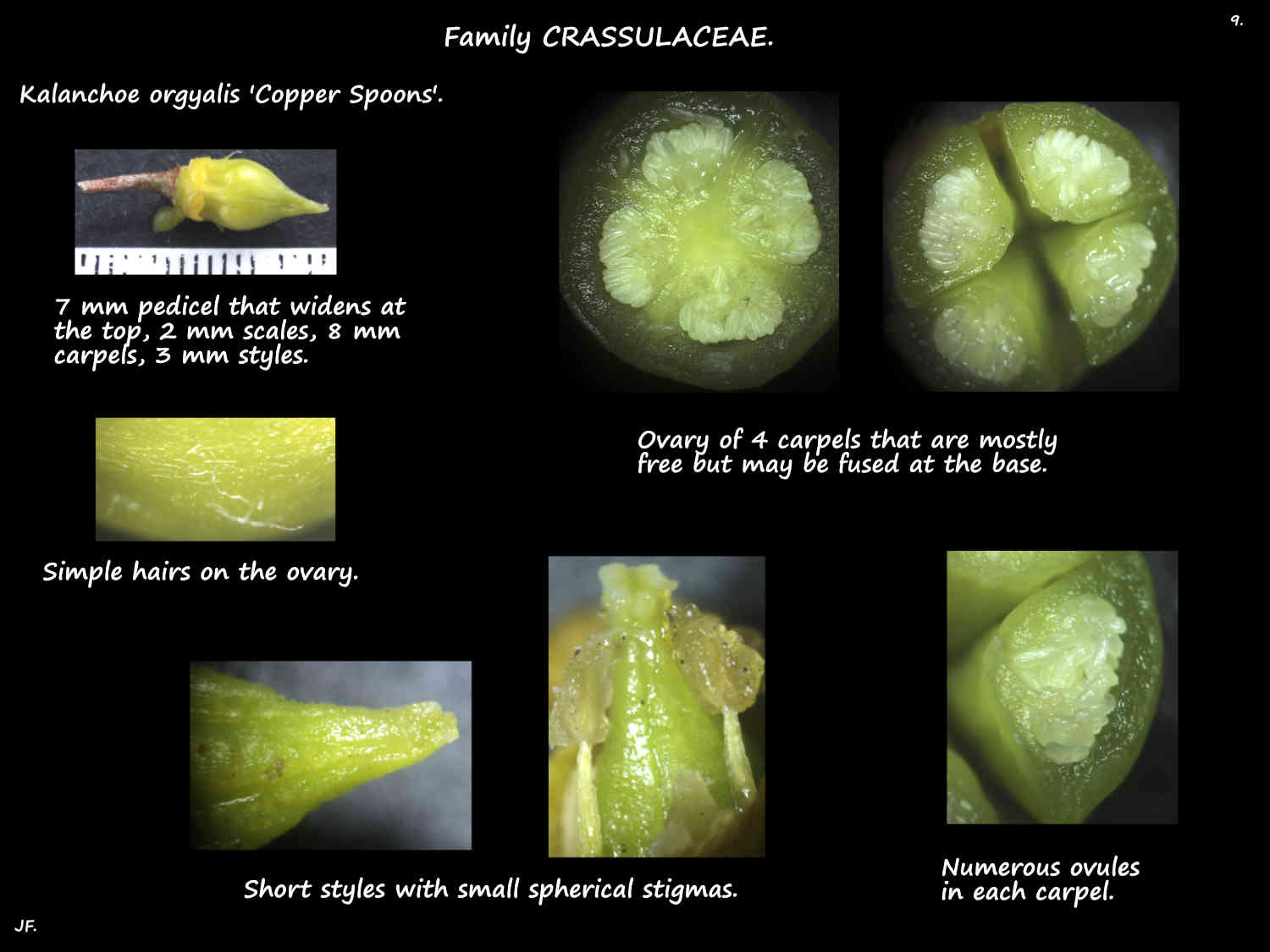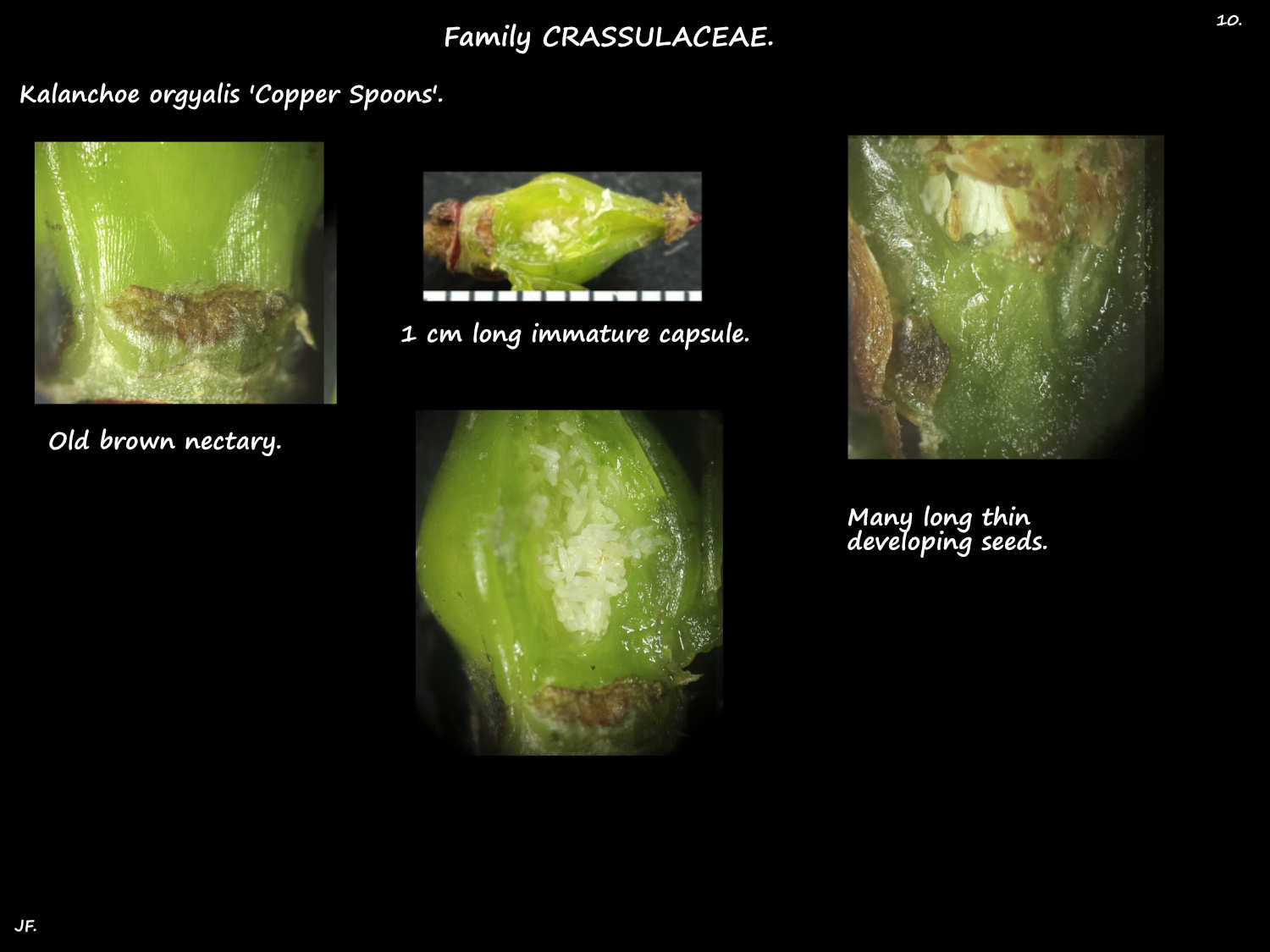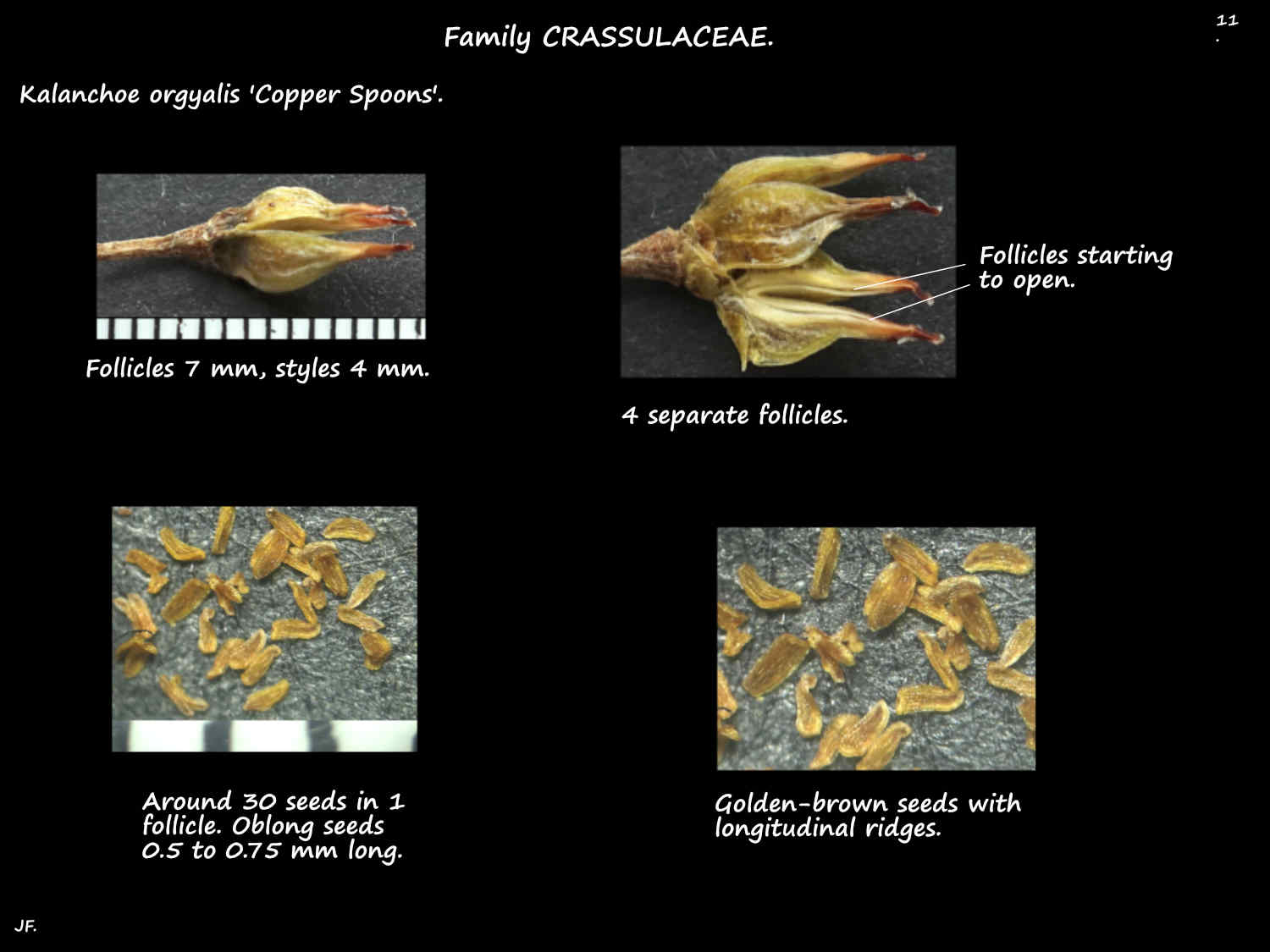Kalanchoe orgyalis.
Family Crassulaceae > Subfamily Sedoideae > Tribe Kalanchoeae.
Commonly known as Copper Spoons they are native to Madagascar.
The perennial shrubs are usually around 75 to 100 cm high but can be up to 2 m.
The many slender branches are in opposite decussate pairs.
Stems are succulent but the lower ones may become slightly woody.
Stems are covered in dense coppery-brown stellate hairs.
On older plants the hairs become greyish to whitish.
Leaves are opposite and decussate (in 4 ranks with alternate pairs at right angles).
The 5 to 15 or 20 mm long hairy petiole is grooved on the upper surface.
The roundish, ovate to spatula-shaped blades are up to 15 cm long by 10 cm wide at the base of the shrub.
The blade base is wedge-shaped, the tip has a small abrupt point and the edge is smooth.
The succulent blades, up to 1 cm thick are flat or slightly folded up with a concave upper surface.
Leaves are green but young ones are densely covered in fine hairs.
Hairs on the upper surface are red-brown or copper-coloured with silvery-grey ones on the lower surface.
The upper surface hairs age to a silver grey then all the hairs gradually fall off.
Lower leaves fall off leaving marked dark brownish scars on the stems.
Plantlets may develop on attached or fallen leaves especially if damaged.
Loosely branched terminal inflorescences are up to 1 (2) m high.
The opposite and decussate branches usually slope upwards but may be horizontal.
Each branch (peduncle) has a hairy brown leaf-like bract at the base.
Branches are cymes with a few to many flowers that open from the tip of the branch first.
Flowers are on a hairy pedicel up to 1.5 cm long with rust coloured then white hairs.
The 4 (5) free fleshy sepals are attached to the base of the corolla tube.
The triangular sepals, with a pointed tip are up to around 5 mm long and 2.5 mm wide.
They spread out sideways and are covered in fine hairs.
Initially green the sepals become slightly more yellow on the open flowers.
The fleshy petals are fused into an urn-shaped tube around 1 cm long.
The 4 angled tube has a narrow mouth with 4 (5) small lobes on the rim.
The triangular to ovate lobes, up to 5 mm long have a thickened tip.
Lobes curve backwards as the flower matures.
The bright yellow corolla may be smooth or have long hairs on the outer surface.
The 8 stamens are inserted, in 2 whorls near the top of the corolla tube.
Their free filaments are 2 and 3 mm long with ridges extending from their insertion to the bottom of the tube.
The anthers lie within the tube.
There are yellow or greenish-yellow nectaries around the base of the ovary.
Each scale, around 1.5 mm high and 2 mm wide has a rounded or irregular top.
The greenish ovary, under 1 cm long has 4 mainly free carpels each with numerous ovules.
The carpels taper into 2 to 4 mm long styles with small roughly spherical stigmas.
Each carpel develops into a yellow-green follicle around 7 mm long.
Remaining on the shrub for a long time they become dry and blackish-brown.
The corolla and styles remain attached.
Each follicle has numerous blackish-brown seeds.
J.F.
